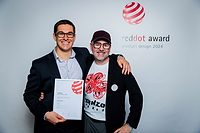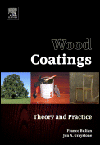BASF Receives Red Dot Award for Coatings Technology

ESSEN, Germany - BASF’s Coatings division was awarded the Red Dot in the Materials and Surfaces category for its functional coating technology for passive temperature management. The accolade was presented during the Designers’ Night at the Red Dot Design Museum in Essen, Germany, on July 9, 2018.
The temperature management system from BASF combines aesthetics and functionality. By combining a basecoat that is transparent to high-energy near infrared (NIR) radiation, with an NIR reflecting filler, the paint reduces the vehicle surface temperature by up to 20° C on hot summer days. Furthermore, the temperature inside the vehicle also does not heat up so much, which means the air conditioning system is used less to control the temperature in the car. This has a positive effect on the energy consumption — especially in the field of electromobility. The paint system not only provides protection and creates a high-level finish for vehicles, it also ensures additional comfort and greater efficiency.
“Modern mobility concepts such as autonomous driving or electromobility create new challenges for our developers and designers. The temperature management system is just one of our projects for future mobility. Furthermore, we are currently working on paint systems with higher reflectivity to increase the recognizability for LiDAR sensors without affecting the aesthetical approach. Within the next years, this will be a crucial topic for autonomous driving,” explained Stephan Schwarte, head of Pigments, Dispersions & Innovative Colors EMEA at BASF’s Coatings division.
Material expert Dr. Sascha Peters, who has also been part of this year’s Red Dot jury, highlighted the sustainable approach of the temperature management technology. “The paint system is an outstanding example for the development towards sustainable mobility. It helps us to reduce the use of resources in a smart way. When changing to electric mobility in the future, we will hopefully see further solutions like this,” said Peters.
At the annual “Red Dot Award: Product Design,” a jury of about 40 members evaluates all submissions by using criteria such as degree of innovation, functionality or sustainability. In 2018, designers and manufacturers from 59 nations registered more than 6,300 objects for the competition.
Looking for a reprint of this article?
From high-res PDFs to custom plaques, order your copy today!









